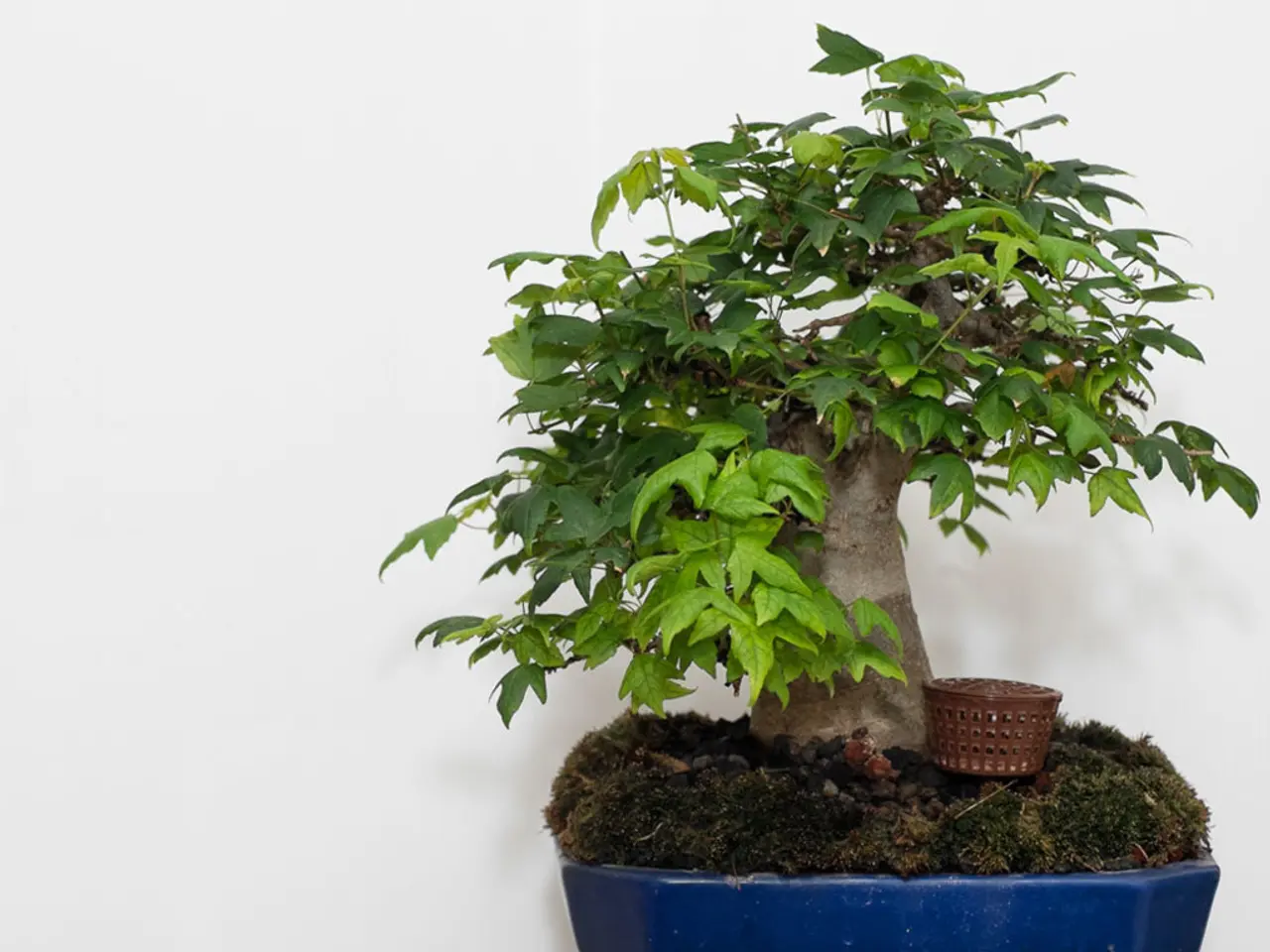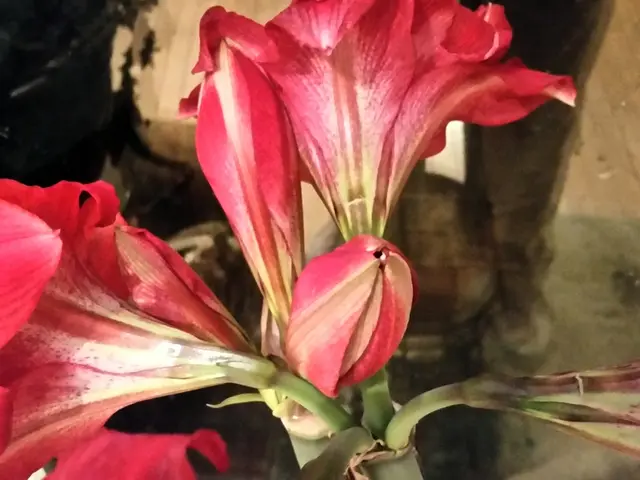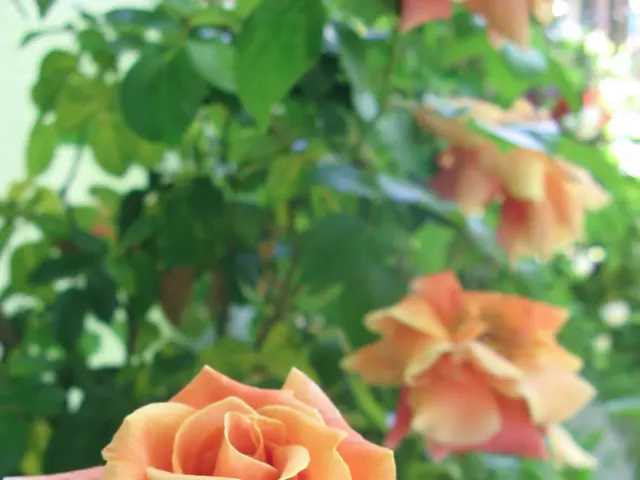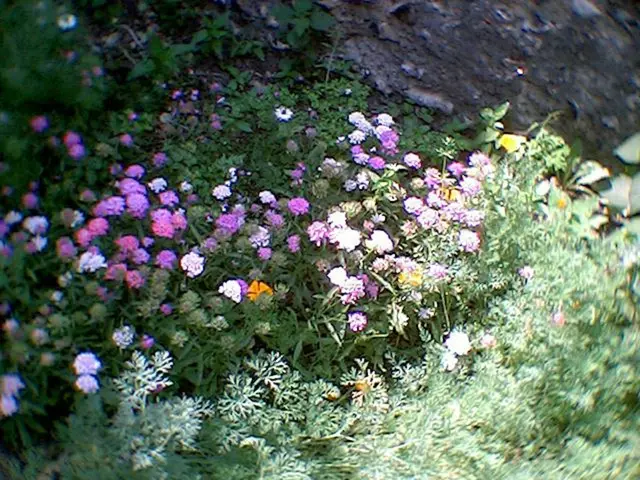Ceramic Pots for Bonsai: Elegance, Adaptability, and Appropriateness
Traditional Japanese ceramic bonsai pots hold a significant place in Eastern horticulture, particularly within the art of bonsai, where they serve both practical and aesthetic roles deeply rooted in history and culture.
The origins of these ceramic containers can be traced back to ancient China and Japan, where potters and bonsai cultivators collaborated to create vessels that harmoniously complemented the miniature trees. The concept of bonsai pots originates from the Chinese "pen" (the Japanese pronounce this as "bon" in bonsai meaning "tray" or "shallow container planting"), with pottery for miniature plant cultivation dating back in China to around the year 1400 when terra cotta containers were first crafted for flowers and small plants.
By the 17th and 18th centuries, such containers, referred to as *Kowatari* when exported to Japan, began influencing Japanese bonsai tradition, which has since evolved to emphasize the pot as an integral part of the bonsai composition. From 1911 to about 1940, mass-produced bonsai pots were made in Yixing (China) to Japanese specifications and exported to Japan, showing an early international exchange in bonsai horticulture materials.
The artistic quality of bonsai pots—often handcrafted from ceramic—is essential to the harmony and balance of the overall bonsai display, reflecting Japanese aesthetics of simplicity and subtle beauty. The bonsai pot is not merely a container but a "home" for the dwarf tree, acting as a boundary to restrict root growth, which helps maintain the miniature size of the tree. John Y. Naka, a renowned bonsai grandmaster, described the pot as a "nice suit of clothes" or a "beautiful frame for a picture," emphasizing how the pot enhances the tree's visual composition without overshadowing it.
Beyond functionality and aesthetics, the ceramics themselves embody cultural values such as *wabi-sabi*, the appreciation of imperfection and transience, which aligns with the broader Eastern philosophical view of nature and life cycles. Techniques related to Japanese ceramics like *Kintsugi* (repairing broken pottery with gold, highlighting the beauty of imperfections) symbolize resilience and reverence for history, which metaphorically parallels the care and nurturing of bonsai trees across generations.
Traditional ceramic bonsai pots contribute to the spiritual and meditative aspects of bonsai growing, often considered a bridge between cultures and a living testament to patience, artistry, and shared understanding. The bonsai itself, nurtured within these pots, becomes a symbol of endurance, peace, and continuity, with its container acting as a foundational element in this symbolic ecosystem. In modern contexts such as Middle Eastern regions adapting bonsai art, traditional Japanese ceramics help tie the bonsai to deep cultural narratives of nurturing, resilience, and intergenerational connection, highlighting the universal appeal of this horticultural practice.
Selecting the ideal ceramic pot requires consideration of scale, shape, depth, and width for a visually appealing and balanced composition. The pursuit of tree-pot harmony is a cornerstone of elegance in bonsai design. Ceramic pots can provide insulation and protection from temperature fluctuations for outdoor bonsai trees in freezing climates. Proper care and maintenance of ceramic pots include avoiding extreme temperature fluctuations, handling with care, regular cleaning, and proper storage.
A kaleidoscope of glaze options is available for ceramic bonsai pots, each imbuing the vessel with a unique essence. Bonsai artists can transcend mere plant cultivation by carefully selecting a pot that harmonizes with the tree's unique character. The rich cultural heritage embedded in these traditional containers serves as an attestation to the symbiotic relationship between the artisan, the tree, and the vessel, a triumvirate that has given rise to an art form that transcends the boundaries of time and space.
- The evolution of Japanese bonsai tradition was significantly influenced by the Kowatari containers from China, which eventually morphed into home-and-garden artifacts and became an integral part of the bonsai composition.
- In the realm of bonsai growing, the ceramic pot is not just a container but a lifestyle element, acting as a home for the dwarf tree and highlighted by renowned bonsai masters as a beautiful frame enhancing the tree's visual composition.








